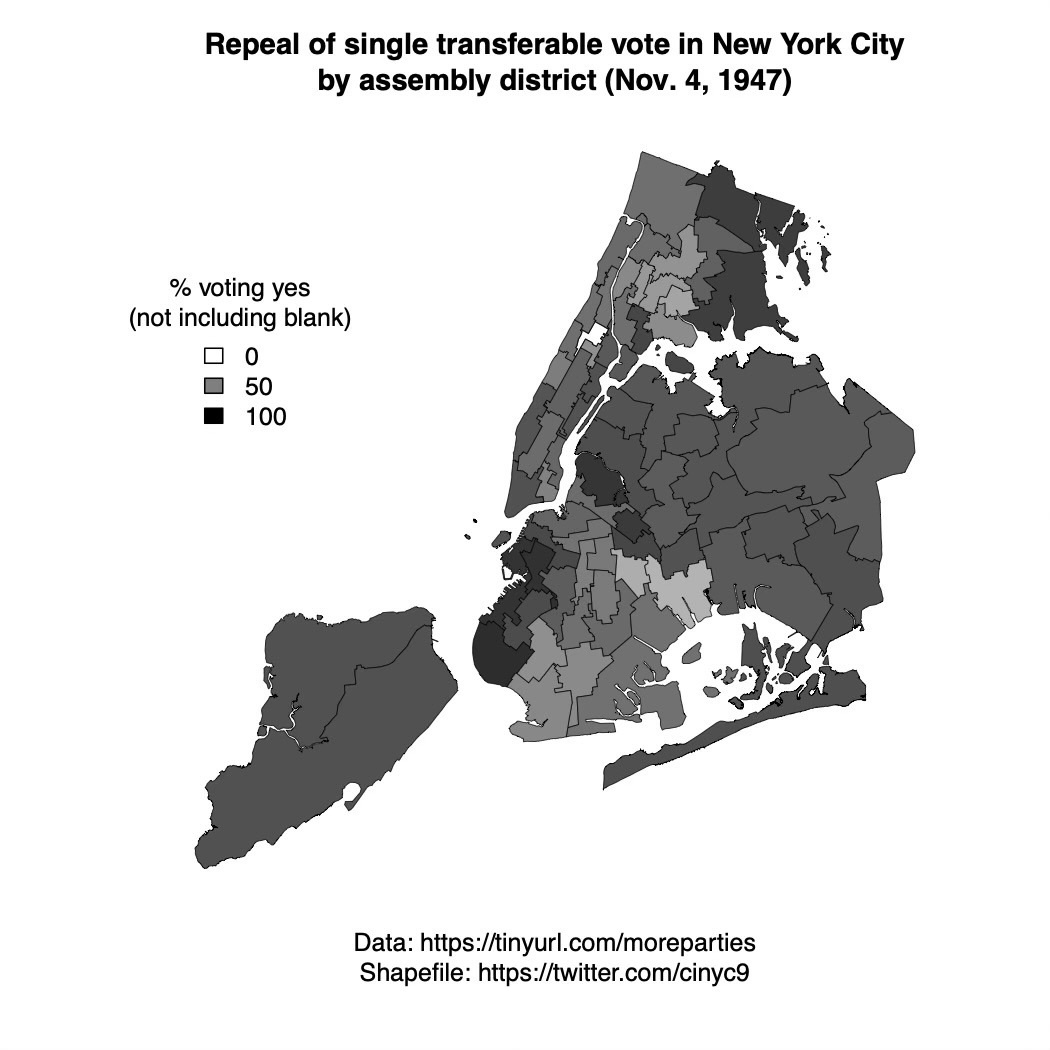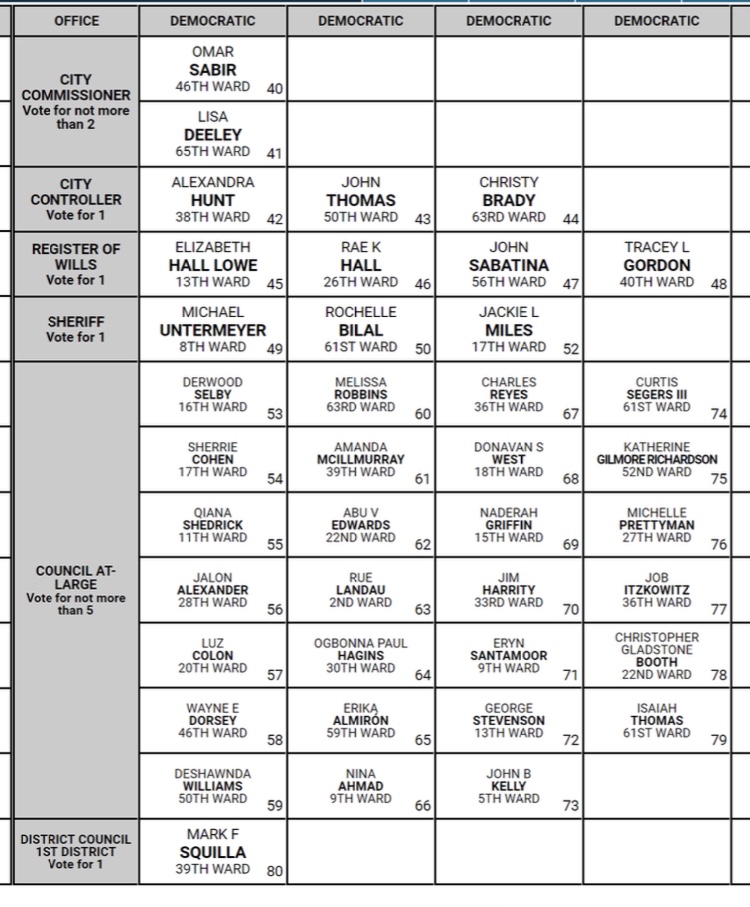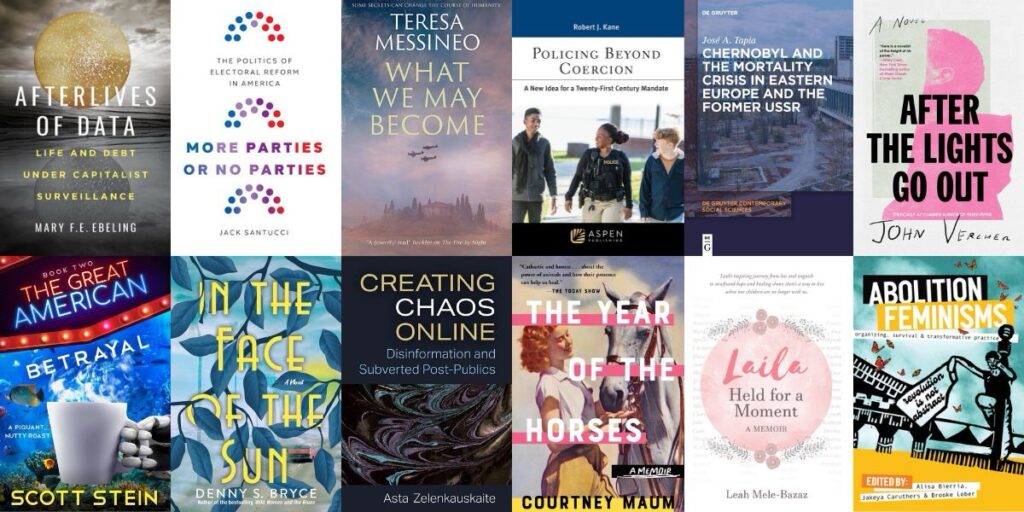I may have more to say about this later.

Two sorts of hypotheses might explain the variation. One concerns third-party strength (Labor, Liberal, Communist). But ecological inference suggests a divided Labor Party!
The other sort concerns politics of urban renewal. This may help explain the pockets of opposition in Bronx and Brooklyn. Also in the book, I analyze the City Council roll-call record. Those data suggest a faction of the Republican Party feuding with the O’Dwyer (D) administration and other Republicans on budget matters.
Another point worth mentioning: this was one of few repeals (the only?) that increased assembly size. So, there may be a counterintuitive representation story too.
Feel free to comment if anything strikes you.

